 It’s no secret that a highlight of French Christmas is the bûche de Noël that crowns a festive meal. What is less well known is that the traditional Yule log cake is rarely — but I mean, really rarely — made at home in France. This is because prettily decorated bûches in all sizes are on offer at every pastry shop in the country during the season. And yet, as I discovered in my kitchen, it’s both possible and amusing to make one yourself.
It’s no secret that a highlight of French Christmas is the bûche de Noël that crowns a festive meal. What is less well known is that the traditional Yule log cake is rarely — but I mean, really rarely — made at home in France. This is because prettily decorated bûches in all sizes are on offer at every pastry shop in the country during the season. And yet, as I discovered in my kitchen, it’s both possible and amusing to make one yourself.
Bûche de Noël chocolat-noisette / Chocolate-hazelnut Yule log
Not that I’m saying it was easy. It required both patience and a bit of dexterity. But it all paid off when my carefully chosen panel of tasters (my daughter and a few friends) tried the log shown in the photo. The most common comment? ‘More, please!’ Second most common comment? ‘What’s in it?’ (Short answer: It’s a thin hazelnut cake with a tiramisu-style mocha cream filling decorated with dark chocolate icing and hazelnuts.)
Now, before I go on, you should know that bûches de Noël come in an amazing profusion of flavors. Chocolate, coffee and vanilla are common but so, these days, are raspberry, passion fruit, pistachio, mango, chestnut and the list goes one. Pastry shops sell family-sized logs as well as bûchettes (just big enough for one person) and many sizes in between. Frozen bûches are also popular — made of ice cream or sherbet, sometimes with cake involved and sometimes not. Liberties have been taken with the shape. Sometimes the ‘logs’ are actually rectangular. And the decorations vary wildly. Here are some examples from Picard, France’s excellent frozen food chain.
When I set out to make a bûche, my first port of call was a cookbook I’ve had for decades called Faites votre patisserie comme Lenôtre — ‘Make your pastry like Lenôtre’ (Gaston Lenôtre was a famous French pastry chef). Sure enough, M. Lenôtre delivered the goods, proposing a variety of bûches decorated with delicate snowmen and mushrooms made of meringue and leaves made of green almond paste. Very traditional, yet a bit over the top for an everyday French chef. So I turned elsewhere for inspiration.
To tell you the truth, I spent hours searching for a recipe that looked both delicious and easy enough to make in a couple of hours. One that caught my eye was a recipe for a chocolate-hazelnut log by Cyril Lignac, a well-known contemporary chef. But then I read the fine print. His very handsome log was filled with pâte à tartiner, aka Nutella, a sweet chocolate-hazelnut spread loved by schoolchildren and avoided by everyone else. And it was iced with melted milk chocolate mixed with (I’m not kidding) a full cup of sunflower oil! At that point I decided to innovate — and that’s when the fun began.
I made my log on a chilly November morning, not knowing how long it would take. I was prepared to spend the day at it, but in fact the entire process took only two hours. You start by making the filling — a blend of mascarpone, egg yolks, sugar, cocoa, coffee and beaten egg whites. Then you make a thin sheet of hazelnut genoise (I used my oven tray for this). When the cake is done, you cut away the sides to form a clean rectangle, then coat it with the mascarpone filling and roll it up. Next you make the icing — dark chocolate melted with a little butter and cream (no sunflower oil!). The last step is decoration.
I’m posting this recipe well before Christmas to give you time to think it over and gather the ingredients. The good news is that this Yule log can be made in stages over a couple of days, and may be refrigerated for a couple more days before serving, or frozen if you want to get it ready ahead of time. It’s a bit more challenging than most of the recipes on this site. But if you’d like to produce an unforgettable Christmas dessert this year, go for it. And add a couple of sparklers when you bring it to the table. It will knock their socks off.
Happy cooking!
P.S. Planning ahead for Hanukah, Christmas or the New Year? Plenty of suggestions for festive meals with a French touch can be found on the Holiday Menus page.

 Duck has always been a big deal in France, culinarily speaking, and what with the popularity of a certain American import it was inevitable that the French would put their own twist on it and create the duck burger. Some recipes use
Duck has always been a big deal in France, culinarily speaking, and what with the popularity of a certain American import it was inevitable that the French would put their own twist on it and create the duck burger. Some recipes use  Many years ago, when making boeuf bourguinon for a party, I discovered a sophisticated side dish with laughably humble origins — cabbage purée. How I discovered it is a mystery. I thought it might have been via Patricia Wells, but when I looked through her cookbooks it wasn’t there. Perhaps it was Julia Child? Negative. Well, whatever. I’ve been making it for years, and am always delighted when my guests can’t figure out what it is.
Many years ago, when making boeuf bourguinon for a party, I discovered a sophisticated side dish with laughably humble origins — cabbage purée. How I discovered it is a mystery. I thought it might have been via Patricia Wells, but when I looked through her cookbooks it wasn’t there. Perhaps it was Julia Child? Negative. Well, whatever. I’ve been making it for years, and am always delighted when my guests can’t figure out what it is. This savory pie of chicken, mushrooms and leeks in a creamy sauce encased in puff pastry (pâte feuilletée) makes a lovely autumn dish for lunch or a light supper. Full disclosure: I don’t make the pastry myself, but instead use a couple rolls of high-quality, all-butter store-bought puff pastry. This saves a lot of time. Then all you need to do is invite a couple of guests, make a salad, open a bottle of wine and voilà — your meal is ready.
This savory pie of chicken, mushrooms and leeks in a creamy sauce encased in puff pastry (pâte feuilletée) makes a lovely autumn dish for lunch or a light supper. Full disclosure: I don’t make the pastry myself, but instead use a couple rolls of high-quality, all-butter store-bought puff pastry. This saves a lot of time. Then all you need to do is invite a couple of guests, make a salad, open a bottle of wine and voilà — your meal is ready.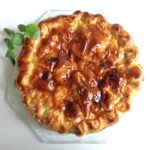 To allow steam to escape while the pie is baking, the French often cut a coin-shaped round out of the center of the top crust and insert a rolled piece of paper to create a chimney (cheminée). But I chose instead to cut a few slits into the top and, with leftover pâte feuilletée, added some cut-out diamonds for decoration. No sooner did the pie come out of the oven than it disappeared.
To allow steam to escape while the pie is baking, the French often cut a coin-shaped round out of the center of the top crust and insert a rolled piece of paper to create a chimney (cheminée). But I chose instead to cut a few slits into the top and, with leftover pâte feuilletée, added some cut-out diamonds for decoration. No sooner did the pie come out of the oven than it disappeared. This salad is a Paris bistro classic — tender leaves bathed in a light mustard vinaigrette and topped with cubed ham and cheese, boiled potatoes and quartered eggs. Or with other ingredients. Green beans, tomatoes, mushrooms, croutons, you name it. It’s a salad I’ve never encountered in a Parisian home, yet it is omnipresent in Paris cafés. I’ve put off posting about it for years for the simple reason that no one can agree on what it actually is.
This salad is a Paris bistro classic — tender leaves bathed in a light mustard vinaigrette and topped with cubed ham and cheese, boiled potatoes and quartered eggs. Or with other ingredients. Green beans, tomatoes, mushrooms, croutons, you name it. It’s a salad I’ve never encountered in a Parisian home, yet it is omnipresent in Paris cafés. I’ve put off posting about it for years for the simple reason that no one can agree on what it actually is.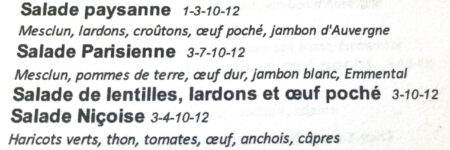
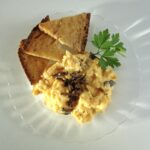 For a supremely elegant brunch dish, you can’t do better than scrambled eggs with truffles. Wait! Did she say truffles? But yes, my friends. You may have heard that truffles cost as much per ounce as gold, but that turns out to be false. You may think they’re hard to find, but that’s also not true in these days of online ordering. Preserved truffles are fine in this quick and easy recipe. So go ahead — invite some guests and knock their socks off.
For a supremely elegant brunch dish, you can’t do better than scrambled eggs with truffles. Wait! Did she say truffles? But yes, my friends. You may have heard that truffles cost as much per ounce as gold, but that turns out to be false. You may think they’re hard to find, but that’s also not true in these days of online ordering. Preserved truffles are fine in this quick and easy recipe. So go ahead — invite some guests and knock their socks off.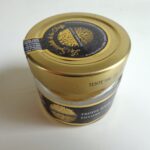 I’d been wanting to make scrambled eggs with truffles for a very long time, but when I went to my local farmers market recently in search of a truffle I couldn’t find one. Turns out they’re not in season. The season for the prized French black winter truffle begins only in mid-November, while the season for summer truffles ends in mid-September. But a shop in my neighborhood,
I’d been wanting to make scrambled eggs with truffles for a very long time, but when I went to my local farmers market recently in search of a truffle I couldn’t find one. Turns out they’re not in season. The season for the prized French black winter truffle begins only in mid-November, while the season for summer truffles ends in mid-September. But a shop in my neighborhood,  At last it’s time to make the eggs. This takes about three minutes. Slice the truffle thinly, reserve a few slices for garnish, beat the eggs with the cream, salt and pepper, and add the truffle slices. But how to cook them? The French method involves stirring the eggs into a creamy mass in a pan set over boiling water (au bain marie). But this is not strictly necessary. You can also scramble them as usual in a pan coated with melted butter.
At last it’s time to make the eggs. This takes about three minutes. Slice the truffle thinly, reserve a few slices for garnish, beat the eggs with the cream, salt and pepper, and add the truffle slices. But how to cook them? The French method involves stirring the eggs into a creamy mass in a pan set over boiling water (au bain marie). But this is not strictly necessary. You can also scramble them as usual in a pan coated with melted butter.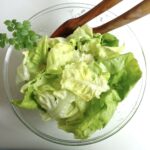 This week marks the 10th anniversary of The Everyday French Chef. When I started the site, back in 2012, I could never have imagined that readers would check out my recipes more than a million times. Thank you!! I’d like to celebrate by sharing a personal ‘best of’ list of recipes for autumn (I will post similar ‘best of’ lists this year for winter, spring and summer as the seasons change.) And by saluting the site’s most popular recipe…
This week marks the 10th anniversary of The Everyday French Chef. When I started the site, back in 2012, I could never have imagined that readers would check out my recipes more than a million times. Thank you!! I’d like to celebrate by sharing a personal ‘best of’ list of recipes for autumn (I will post similar ‘best of’ lists this year for winter, spring and summer as the seasons change.) And by saluting the site’s most popular recipe…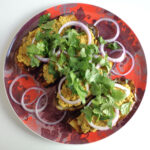 Starters
Starters Soups
Soups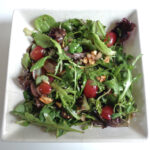 Salads
Salads
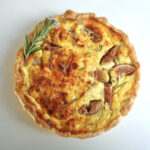
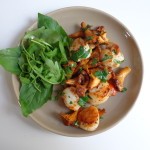 Fish and shellfish
Fish and shellfish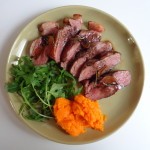 Poultry and game
Poultry and game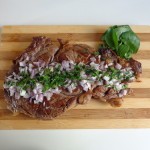 Meat dishes
Meat dishes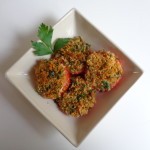 Vegetables
Vegetables Pasta and grains
Pasta and grains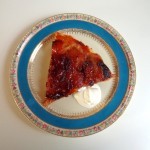
 What could be better when the temperature soars than a zingy cold soup? This one combines zucchini with tiny lentils, Indian flavorings and mint, and can be topped with coconut milk and/or any number of embellishments. The idea for it popped into my head as yet another heatwave loomed in Paris. With the mercury due to hit 100 degrees – that’s around 40 Celsius – I wanted to make something cool ahead of time…
What could be better when the temperature soars than a zingy cold soup? This one combines zucchini with tiny lentils, Indian flavorings and mint, and can be topped with coconut milk and/or any number of embellishments. The idea for it popped into my head as yet another heatwave loomed in Paris. With the mercury due to hit 100 degrees – that’s around 40 Celsius – I wanted to make something cool ahead of time… When summer strikes, it’s time to head to the market for red currants — or, if you’re lucky enough to have them in your garden, to go on a picking spree. These jewel-like berries make a fabulous jam that is remarkably easy to prepare. Unlike cherries, plums or apricots, red currants do not need pitting. And unlike red currant jelly, the jam does not require the tricky step of squeezing the cooked berries through a cheesecloth (étamine).
When summer strikes, it’s time to head to the market for red currants — or, if you’re lucky enough to have them in your garden, to go on a picking spree. These jewel-like berries make a fabulous jam that is remarkably easy to prepare. Unlike cherries, plums or apricots, red currants do not need pitting. And unlike red currant jelly, the jam does not require the tricky step of squeezing the cooked berries through a cheesecloth (étamine). In the good old days, when I still had my country cottage in Burgundy, I had both red and black currants growing in the garden in profusion. Every year there was a tense moment in early summer when the berries started to ripen. I could only get down to the cottage on weekends. Who would get the ripe berries first, me or the birds? Sometimes the birds won, but I usually managed to pick enough for a batch or two of jam. And once the jam is in the jars, you can keep it for months or years.
In the good old days, when I still had my country cottage in Burgundy, I had both red and black currants growing in the garden in profusion. Every year there was a tense moment in early summer when the berries started to ripen. I could only get down to the cottage on weekends. Who would get the ripe berries first, me or the birds? Sometimes the birds won, but I usually managed to pick enough for a batch or two of jam. And once the jam is in the jars, you can keep it for months or years. Jam is a different matter — easy to make, and so rewarding in the bleak midwinter when you open a jar and dip in a spoon. The intense burst of flavor as you taste the fruit will transport you back to blissful summer days. And you’ll have the satisfaction of knowing that you did it yourself. With just fruit and sugar.
Jam is a different matter — easy to make, and so rewarding in the bleak midwinter when you open a jar and dip in a spoon. The intense burst of flavor as you taste the fruit will transport you back to blissful summer days. And you’ll have the satisfaction of knowing that you did it yourself. With just fruit and sugar. Stuffed tomatoes are one of the glories of French country cooking. This is peasant food at its finest, and fillings differ considerably. The traditional recipe, which hails from Provence, uses sausage meat, often in combination with beef or veal, and flavored with onion, garlic, herbes de Provence and fresh parsley or basil. In a lighter, vegetarian/vegan version, the tomatoes are stuffed with a filling similar to ratatouille, with a little bulghur added for heft.
Stuffed tomatoes are one of the glories of French country cooking. This is peasant food at its finest, and fillings differ considerably. The traditional recipe, which hails from Provence, uses sausage meat, often in combination with beef or veal, and flavored with onion, garlic, herbes de Provence and fresh parsley or basil. In a lighter, vegetarian/vegan version, the tomatoes are stuffed with a filling similar to ratatouille, with a little bulghur added for heft. Fillings for tomatoes have evolved over the years in France. In the old days, leftover meat from boiled dishes such as
Fillings for tomatoes have evolved over the years in France. In the old days, leftover meat from boiled dishes such as  For the veggie filling, you can follow the recipe given here — with eggplant, zucchini, onions and garlic — or use your imagination. I’ve seen recipes that use combinations including potatoes, carrots, mushrooms, corn, pine nuts, raisins, goat cheese or olives. In all of these, the tomato pulp is also incorporated.
For the veggie filling, you can follow the recipe given here — with eggplant, zucchini, onions and garlic — or use your imagination. I’ve seen recipes that use combinations including potatoes, carrots, mushrooms, corn, pine nuts, raisins, goat cheese or olives. In all of these, the tomato pulp is also incorporated.

